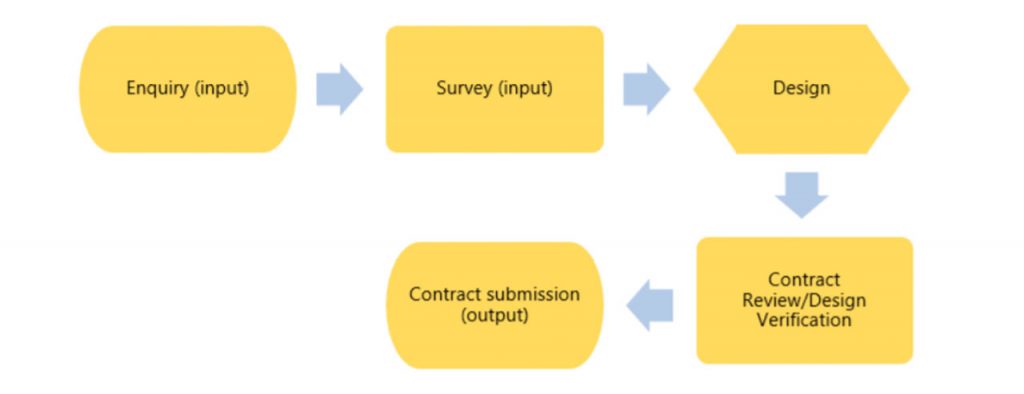What are clauses 7-9 in the ISO 9001 standard?
No business can succeed without some form of support. This clause is directly relating to the resources and support a business requires to achieve their goals.
This is our second story on the newest clauses in the ISO 9001:2015 update.
If you are unfamiliar with the first three clauses, you can read more about them in our story What are the first three new clauses in the ISO 9001:2015 standard?
Clause 7 – support
No business can succeed without some form of support. This clause is directly relating to the resources and support a business requires to achieve their goals.
7.1 Resources
Businesses need to have a thorough understanding of the resources required to deliver their services.
This includes:
- People (e.g. staff)
- Infrastructure
- Environment for the operation of processes
- Tools to measure resources
- Organisational knowledge (i.e. do your staff require training to get the job done)
7.2. Competence
Your organisation needs to review all staff and determine whether they have the knowledge and skills to get the job done correctly in accordance with new policies and procedures.
If your staff aren’t competent, your business needs to take necessary steps to educate the individual or team. You will need to record any training undertaken as evidence.
7.3. Awareness
Awareness is a new requirement, and requires the organisation to ensure staff (both full-time and contractors) are aware of:
- The quality policy
- The reason the policy exists
- The benefits of everyone adhering to the new policy
- The consequences for not following the policy
As the new ISO 9001 standard focuses on leadership, leaders and managers are responsible to oversee this awareness requirement and document evidence of the communication with the staff.
7.4. Communication
This clause relates directly to the process of communication with internal and external stakeholders in the business.
Someone should be the designated internal communicator – this could be a general manager, HR manager or similar. Internal communications include briefings on:
- Policies (old and new)
- Any organisational changes
- Software or hardware changes
- Any changes regarding suppliers and contractors
- Anything which could have an impact on the staff
External stakeholders should also be communicated with by a designated spokesperson or account manager.
7.5. Documented information
This clause relates to all documented information, including:
- Document information required by the standard
- Documented information that’s deemed necessary for the quality management system to be effective
You no longer require an overwhelming amount of documented information – it is up to the organisation to determine how much documented information they need to maintain an effective quality management system.
Clause 8 – operation
8.1 Operational planning and control
This clause relates to the practical elements of getting the job done, from ordering stock through to staff briefings and execution of the project.
An organisation needs to demonstrate their control over the process to ensure it fulfils the quality management standards.
8.2 Requirements for products and services
This clause relates to the following areas of operation:
- Customer communication including inquiries, handling feedback
- Ensuring the organisation can meet the claims for the products and services it offers, including reviewing the requirements of these products and services
- Documenting information regarding the review and any new requirements for products and services
8.3 Design and development of products and services
This relates directly to creating processes for the design and development of products and services to ensure the quality. This clause also requires a business to review design and development processes in order to improve future designs.


8.4 Control of externally provided processes, products and services
This clause ensures organisations reflect on the impact external providers, contractors and suppliers have on the business. All businesses need to communicate effectively with external providers to ensure a high level of quality is maintained.
Suppliers need to be aware of the standards expected by your organisation, and what their role is. Regular reviewing and monitoring needs to be conducted to ensure quality.
8.5 Production and service provision
Organisations are required under this new clause to have controlled conditions under which goods and services are produced. Such controlled conditions include: ensuring the infrastructure and environment is suitable for the operation, the existence of processes to prevent human error and injury, and the existence and implementation of appropriate monitoring and measuring resources.
8.6 Release of products and services
This new clause relates to the systems and process around releasing products and services. A product or service must have a controlled procedure around continual quality management, to ensure it complies with the quality standard. This process includes documenting all the below information:
- Evidence of conformity
- Traceability to the person who has authorised the release
8.7 Control of nonconforming outputs
If a product or service doesn’t conform to the necessary requirements this clause is in place to ensure the correct steps are taken to identify and control the nonconforming products.
This clause applies to all steps of the production and delivery of products and services. The organisation must take the following steps after identifying the nonconforming products/standards:
- Correcting the issue
- Containing the issue or suspending the provision of products/services
- Informing the customer
- Obtaining authorisation for acceptance under concession



